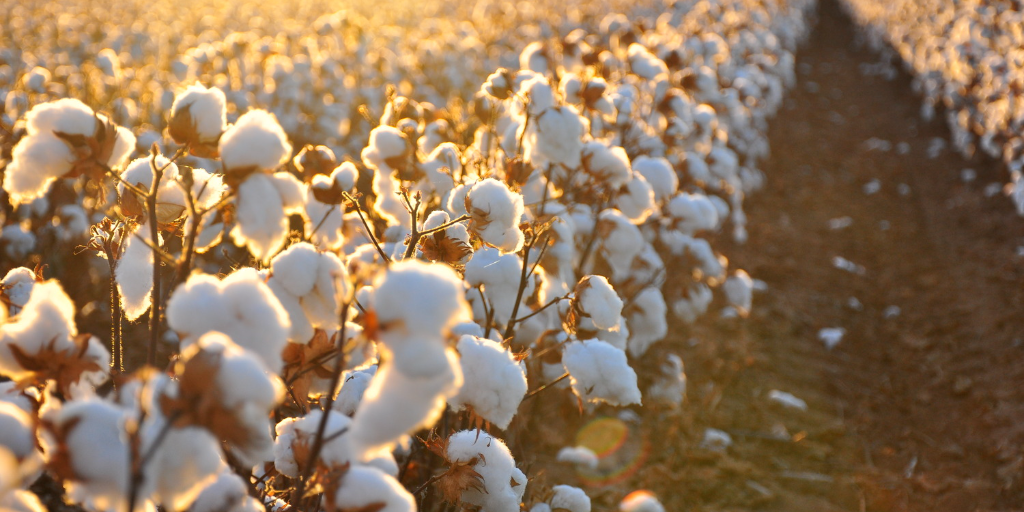Historically speaking, Egypt’s cotton is akin in fame to that of Swiss chocolate or French wine. Egyptian cotton remains a staple in Egyptian culture, a symbol of agricultural pride. National schools include the history and agricultural process of Egyptian cotton in their syllabus. A plethora of folkloric songs express the pride Egyptians have for the plant.
However, the modern-day relevance of Egyptian cotton does not match its history.
Egypt imported more raw cotton than it exported in 2020, according to data from the Observatory of Economic Complexity. This is a stark contrast to Egypt’s cotton production a decade ago when it was Africa’s number one raw cotton exporter at EGP 4.6 billion (USD USD 247 million).
Despite the decrease in exports, Egypt was never a frontrunner in the global cotton industry for its trade volume. Countries such as the United States, Brazil, and India dominate in terms of cotton exports. Egypt’s cotton was a frontrunner due to its premium quality, a level of quality that was found nowhere else.
Decades of decreased quality and production damaging the country’s reputation for quality cotton, begs the question of what caused its downfall – as well as what efforts are being taken to inject life into Egyptian cotton once more.
The Lost Luxury Behind Egypt’s Cotton Industry
Egyptian cotton produces fibers that are far longer than other cotton variants. Known as extra-long staple (ELS) cotton. Unique and rich in quality, Egypt’s cotton earned the moniker of ‘white gold’.
“The [ELS] fiber is longer, more durable, softer, and more breathable [than other types of cotton]. It’s the salt from the Mediterranean mixed with the soil from the Nile coming from the middle of Africa. It’s this perfect mix of natural occurrences. It’s like buying Champagne in Champagne, France—it can only be done there,” says Rami Helali, co-founder of Kotn, an Egyptian cotton fashion apparel, during his interview with Vogue in 2018.
Egypt’s discovery of high-end cotton production is indirectly credited to the United States Civil War. The war created an increased demand for cotton by the US, meaning the country required additional cotton beyond what it produced.
Banking on the wartime economy, Egypt doubled its cotton production during that time, and word spread of its unmatched quality. The country has not looked back since, transforming its cotton industry into its top agricultural export during the twentieth century.
But the luxury synonymous with Egypt’s cotton has been lost over the past decades. The final decade of former President Hosni Mubarak’s rule witnessed corruption and crop tampering. As Mubarak’s administration continued to liberalize the textile industry, unregulated companies began to import cotton of lower quality under the false pretense of it being 100 percent Egyptian cotton
“I would say in late 2009, 2010, is kind of when I started personally hearing less about Egyptian cotton,” Steven Birkhold, former CEO of Lacoste and Diesel USA told The New Yorker in 2020.
The 2011 Revolution to overthrow Mubarak’s regime further exacerbated the country’s cotton slump. The period of chaos spawned by political upheaval resulted in less regulation and monitoring, which degraded agricultural land and the overall quality of Egypt’s cotton.
By 2015, what was once a two million acre subsidized agricultural business during the 1980s had diminished to a mere four hundred thousand acres with all subsidies removed. Many who worked in the cotton business called it the death of the country’s cotton industry.
But recent reforms and market demands are injecting life into Egypt’s white gold once more.
Recent Revival: Turning White into Gold Once More
Egypt is stepping up efforts to revive an industry that makes up three percent of its GDP. Shortly after the cotton crisis of 2015 and 2016, the government renewed certain subsidies on the plant.
Around the same time frame, American retail giants Target and Walmart removed hundreds of thousands of Egyptian cotton products from shelves after discovering that Welspun, an Indian textile supplier, was falsely advertising Indian cotton for luxury Egyptian cotton.
This public relations crisis gave Egypt an unexpected lifeline, as retailers’ demands for Egyptian cotton increased significantly. Directives from President Abdel Fattah Al-Sisi months later would mobilize the government to double cotton production from 700 thousand qintars (80 kilograms) to 1.4 million.
Furthermore, the Cotton Egypt Association – a subsidiary of the Ministry of Trade and Industry responsible for distributing the trademark for accredited Egyptian cotton – inked a deal with Welspun to guarantee the use of authentic Egyptian cotton and the trademark following their retail scandal.
In 2020, Egypt joined the Better Cotton Initiative, a global governance group that aims to improve cotton quality and production in farming countries.
A few years later, Egypt recorded a significant increase in cotton exports – despite the economic stagnation of the coronavirus pandemic and the recent Russian invasion of Ukraine. The exports amounted to EGP 5 billion (UD 274 million), an increase of EGP 1.3 billion (USD 71.2 million) from the year before.
Once labeled as the “Fourth Pyramid” of Egypt, the country is now attempting to rebuild the flora’s high-end economic status once more, once more aiming to put Egyptian cotton on the fashion and textile map.






Comments (6)
[…] القطن المصري: صعود وسقوط وإحياء الذهب الأبيض في مصر […]
[…] القطن المصري: صعود وسقوط وإحياء الذهب الأبيض في مصر […]